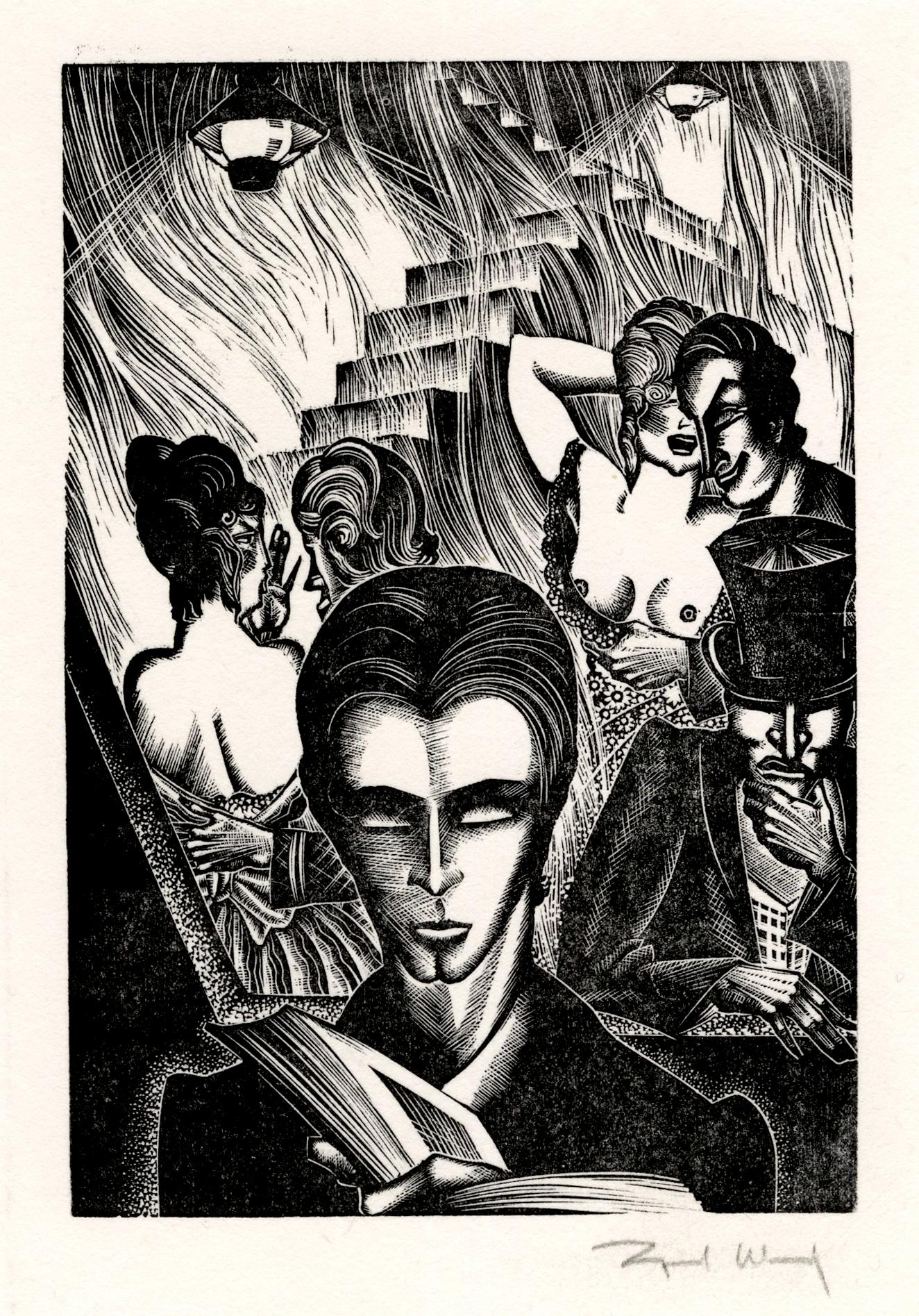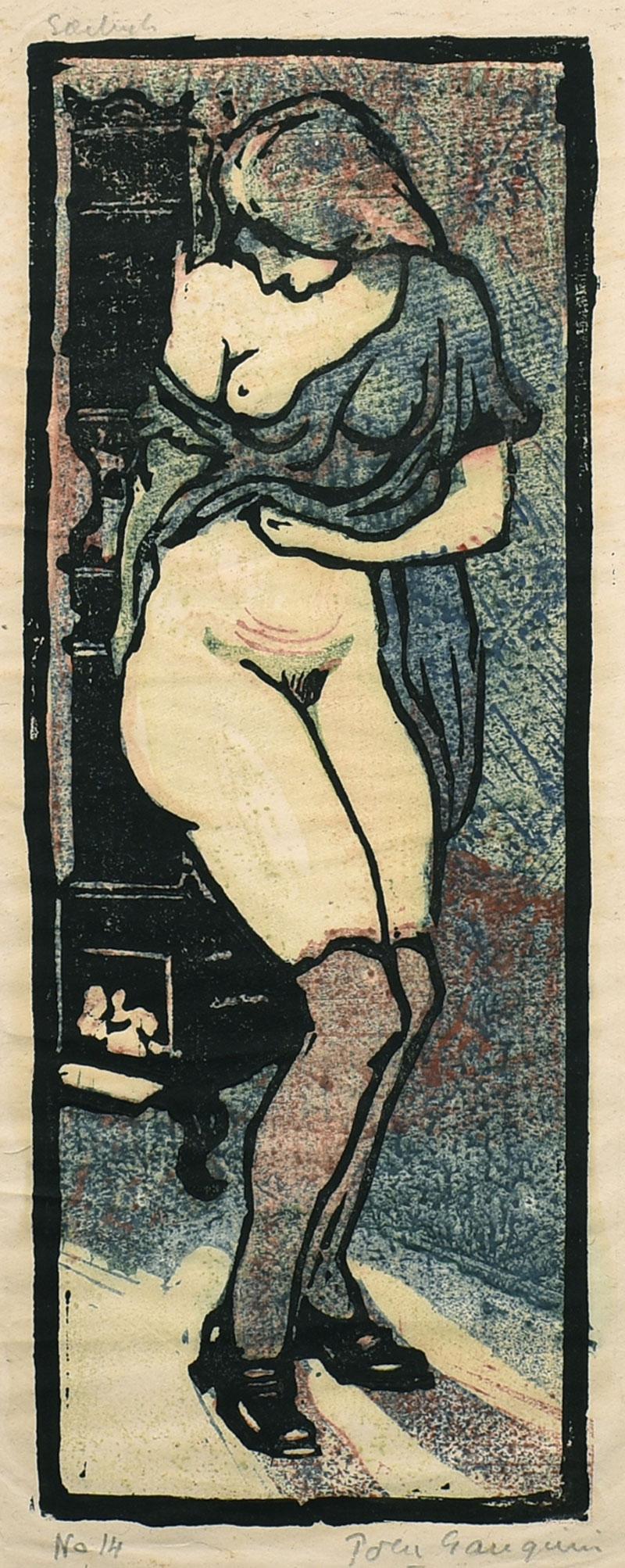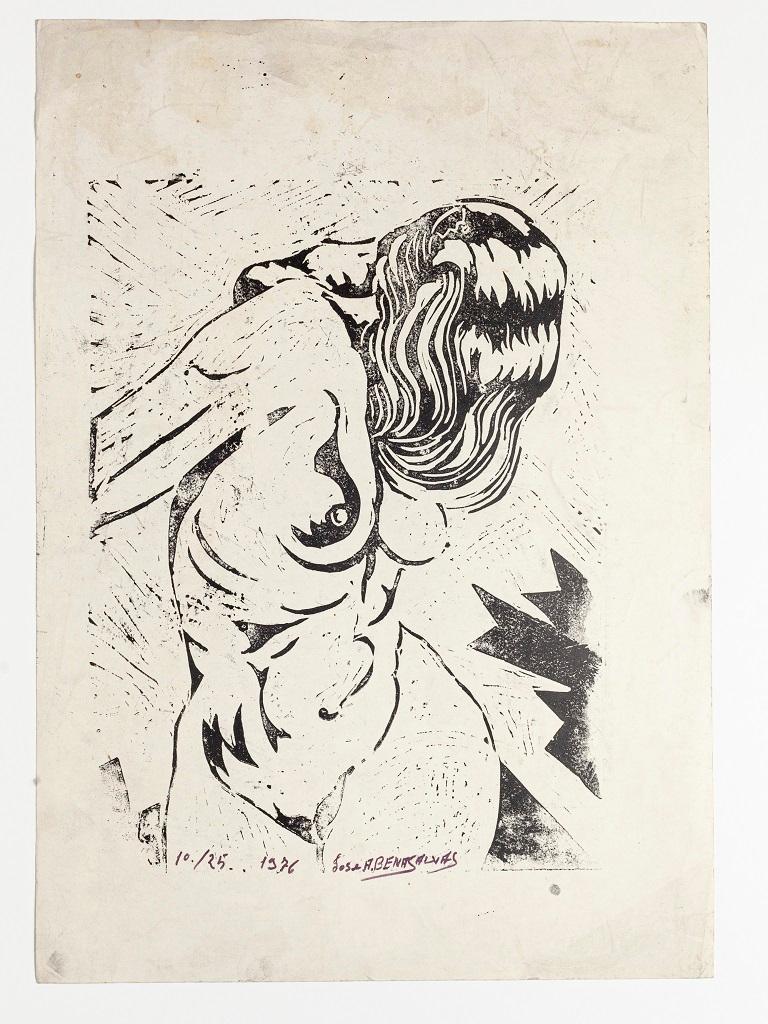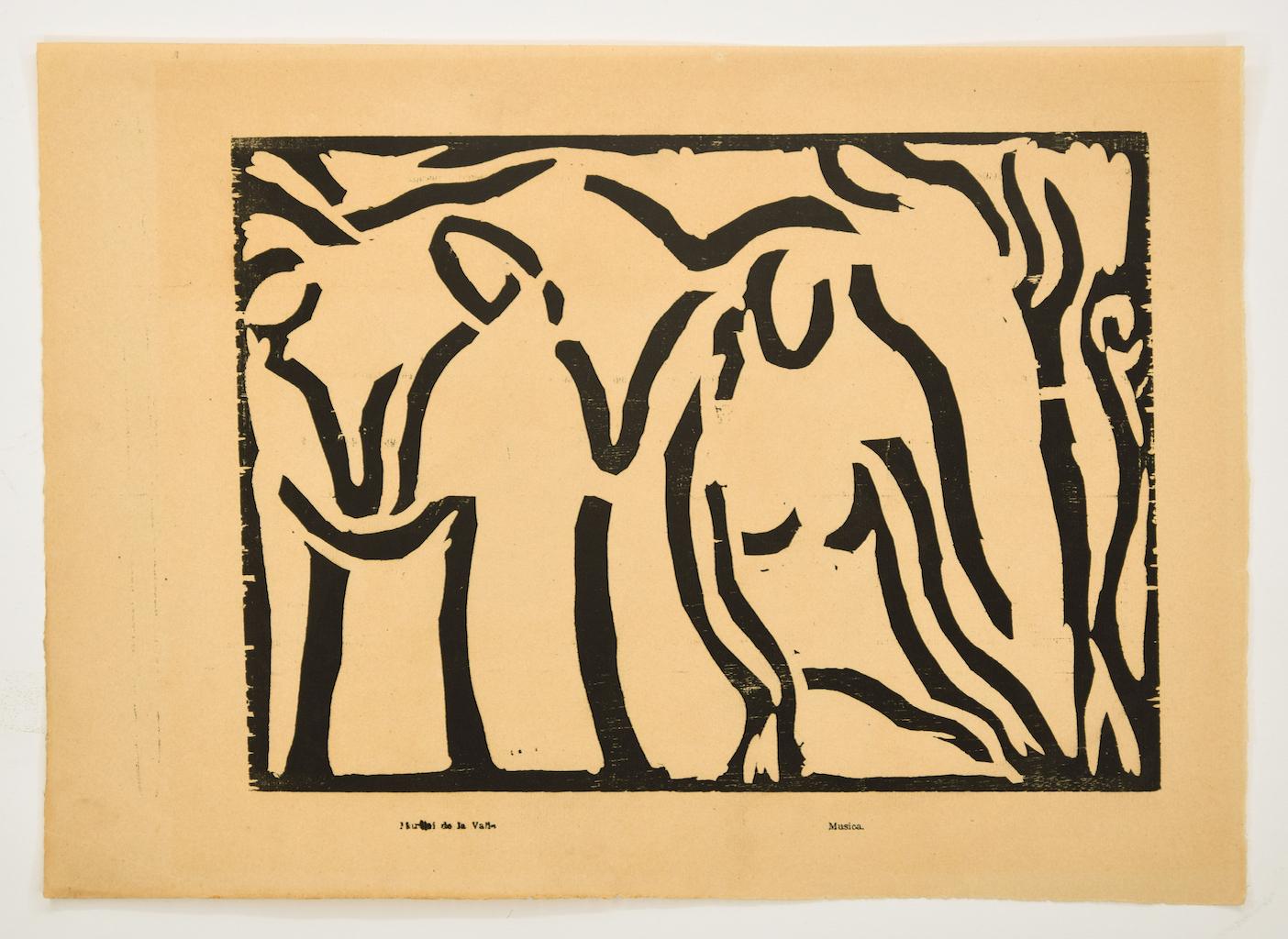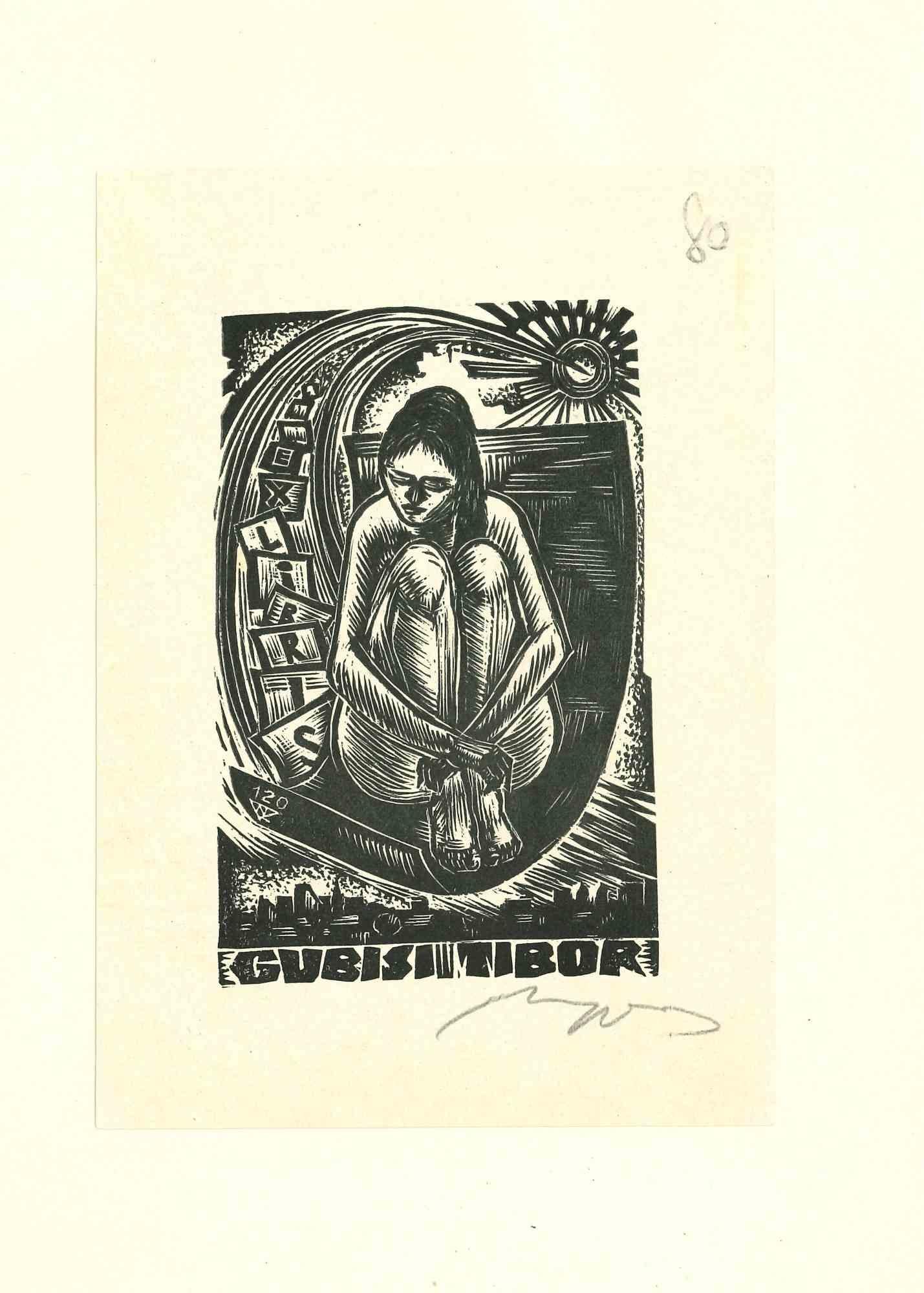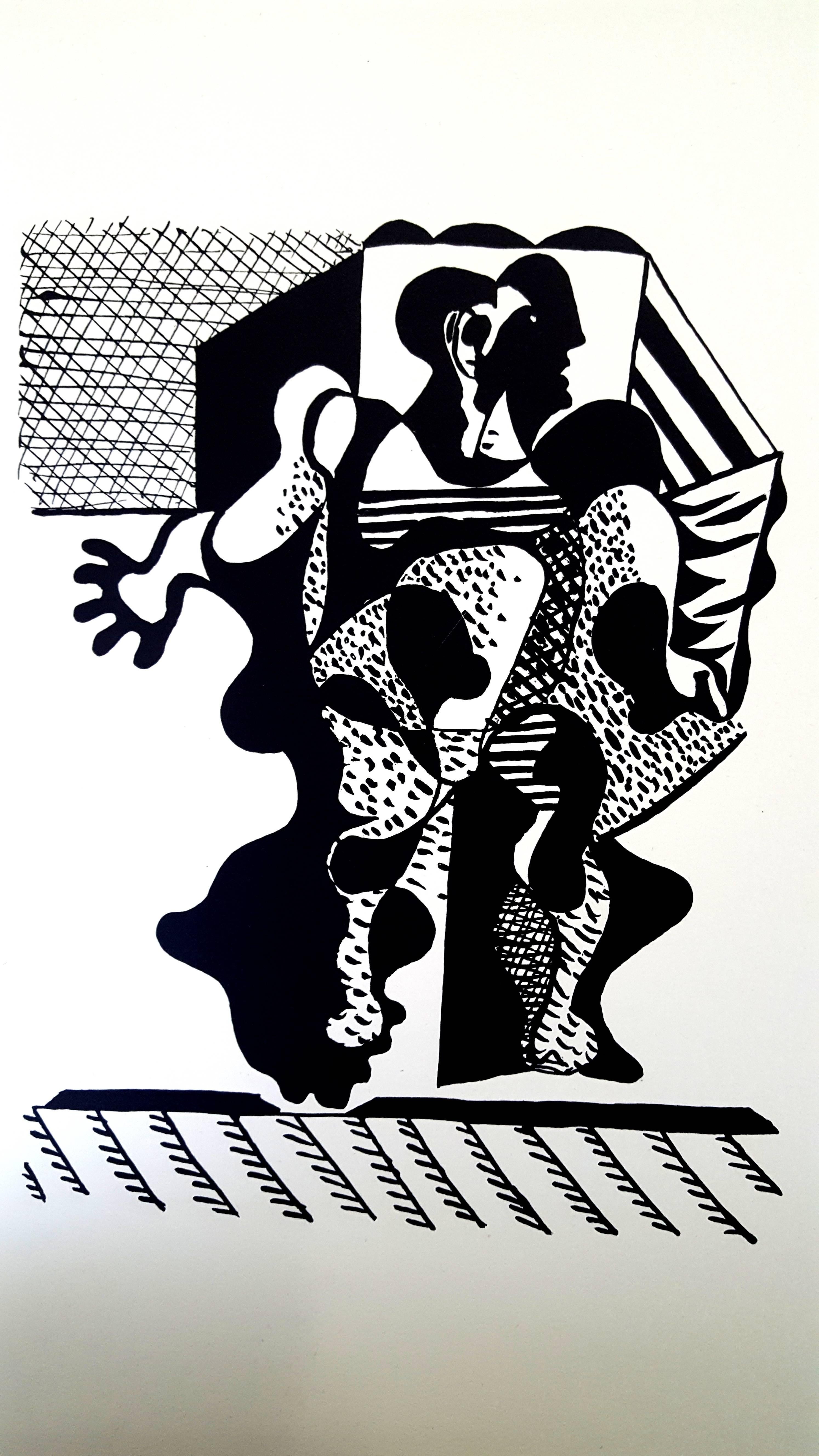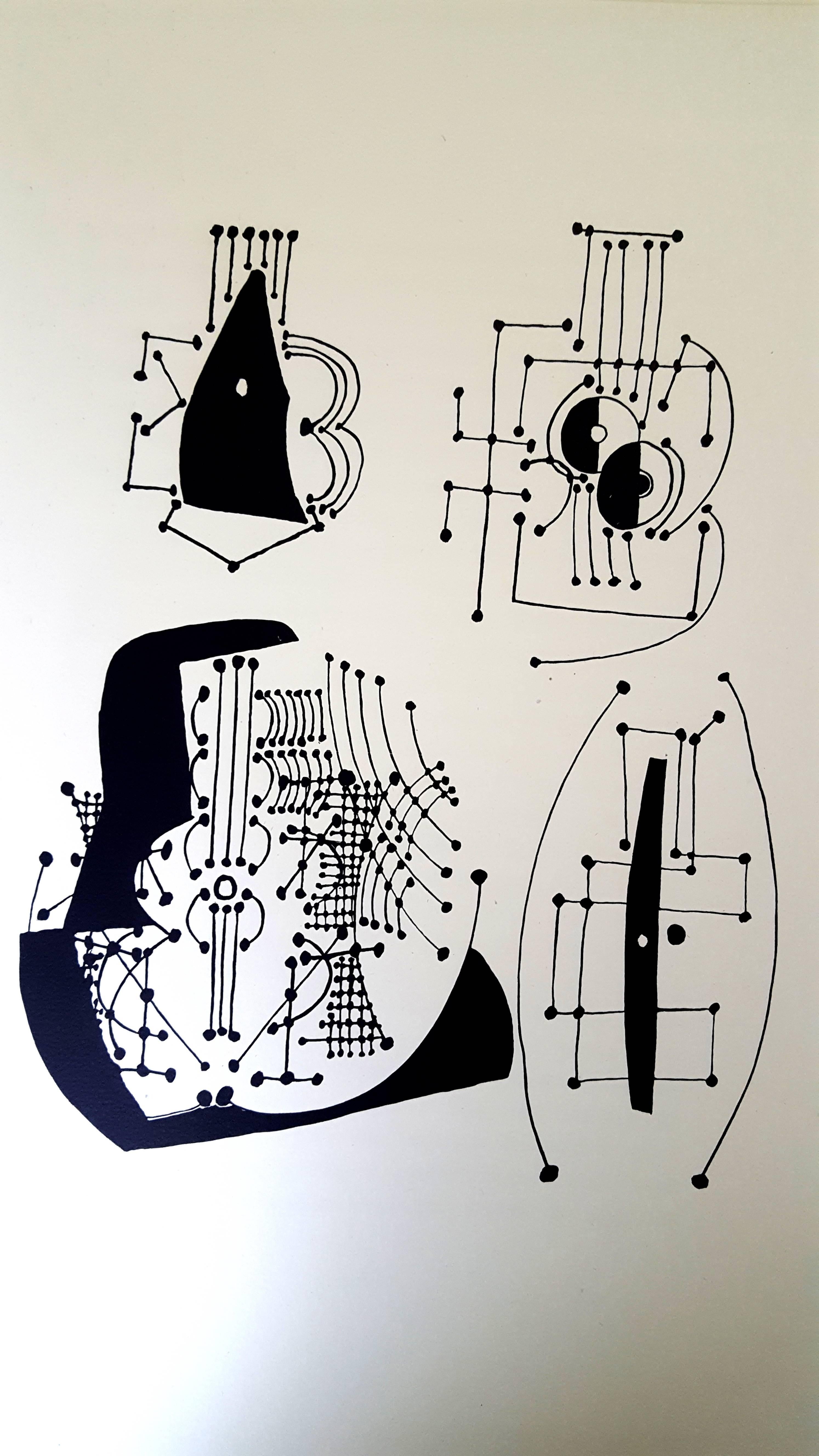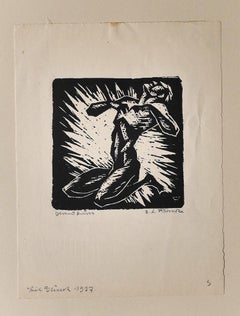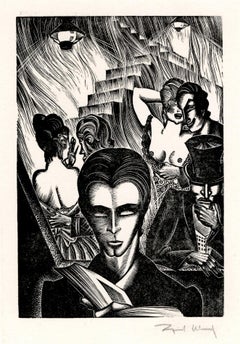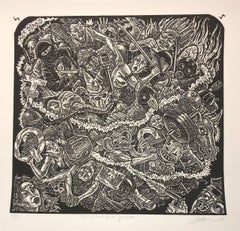Tahiti
View Similar Items
Want more images or videos?
Request additional images or videos from the seller
1 of 9
Wolfgang WolffTahiti1940
1940
About the Item
- Creator:Wolfgang Wolff (1909 - 1994)
- Creation Year:1940
- Dimensions:Height: 21.75 in (55.25 cm)Width: 18 in (45.72 cm)Depth: 1 in (2.54 cm)
- Medium:
- Period:
- Condition:
- Gallery Location:San Francisco, CA
- Reference Number:Seller: wolff/tahiti/pap/031stDibs: LU66635115911
About the Seller
5.0
Platinum Seller
These expertly vetted sellers are 1stDibs' most experienced sellers and are rated highest by our customers.
Established in 1999
1stDibs seller since 2017
688 sales on 1stDibs
Typical response time: 1 hour
More From This SellerView All
- TahitiBy Wolfgang WolffLocated in San Francisco, CAThis artwork titled "Tahiti" 1941 Is a original woodcut by noted French/German artist Wolfgang Wolff, 1909-1994. It is hand signed in pencil by the artist at the lower right corner, ...Category
Mid-20th Century Realist Figurative Prints
MaterialsWoodcut
- La Negra (The Black Woman)By Rufino TamayoLocated in San Francisco, CAThis artwork titled "La Negra (The Black Woman)" from the suite "The Mujeres File" 1969 is an original colors lithograph on B.F.K. Rives paper by renown Mexican artist Rufino Tamayo, 1899-1991. It is hand signed and numbered 150/150 in pencil by the artist. The image size is 26.85 x 21.25 inches, sheet size is 29.5 x 22.15 inches, framed size is 42 x 35 inches. Published by Touchtone Publisher, New York, printed by Ateliers Desjobert, Paris. Referenced and pictured in the artist's catalogue raisonne by Pereda, plate #109 page 107. Custom framed in a wooden silver frame, with silver spacer and fabric matting. It is in excellent condition. About the artist: A native of Oaxaca in Southern Mexico, Rufino Tamayo's father was a shoemaker, and his mother a seamstress. Some accounts state that he was descended from Zapotec Indians, but he was actually 'mestizo' - of mixed indigenous/European ancestry. (Santa Barbara Museum of Art). He began painting at age 11. Orphaned at the age of 12, Tamayo moved to Mexico City, where he was raised by his maternal aunt who owned a wholesale fruit business. In 1917, he entered the San Carlos Academy of Fine Arts, but left soon after to pursue independent study. Four years later, Tamayo was appointed the head designer of the department of ethnographic drawings at the National Museum of Archaeology in Mexico City. There he was surrounded by pre-Colombian objects, an aesthetic inspiration that would play a pivotal role in his life. In his own work, Tamayo integrated the forms and tones of pre-Columbian ceramics into his early still lives and portraits of Mexican men and women. In the early 1920s he also taught art classes in Mexico City's public schools. Despite his involvement in Mexican history, he did not subscribe to the idea of art as nationalistic propaganda. Modern Mexican art at that time was dominated by 'The Three Great Ones' : Diego Rivera, Jose Clemente Orozco, and David Alfaro Siqueros, but Tamayo began to be noted as someone 'new' and different' for his blending of the aesthetics of post Revolutionary Mexico with the vanguard artists of Europe and the United States. After the Mexican Revolution, he focused on creating his own identity in his work, expressing what he thought was the traditional Mexico, and refusing to follow the political trends of his contemporary artists. This caused some to see him as a 'traitor' to the political cause, and he felt it difficult to freely express himself in his art. As a result, he decided to leave Mexico in 1926 and move to New York, along with his friend, the composer Carlos Chavez. The first exhibition of Tamayo's work in the United States was held at the Weyhe Gallery, New York, in that same year. The show was successful, and Tamayo was praised for his 'authentic' status as a Mexican of 'indigenous heritage', and for his internationally appealing Modernist aesthetic. (Santa Barbara Museum of Art). Throughout the late thirties and early forties New York's Valentine Gallery gave him shows. For nine years, beginning in 1938, he taught at the Dalton School in New York. In 1929, some health problems led him to return to Mexico for treatment. While there he took a series of teaching jobs. During this period he became romantically involved with the artist Maria Izquierdo...Category
Mid-20th Century Modern Figurative Prints
MaterialsLithograph
- Torso de Joven (Torso de Jeune Fille)By Rufino TamayoLocated in San Francisco, CAThis artwork titled "Torso de Joven (Torso de Jeune Fille)" from the suite "The Mujeres File" 1969 is an original colors lithograph on Wove paper by renown Mexican artist Rufino Tama...Category
Mid-20th Century Modern Figurative Prints
MaterialsLithograph
- Torso de MujerBy Rufino TamayoLocated in San Francisco, CAThis artwork titled "Torso de Mujer (Torso de Femmee)" from the suite "The Mujeres File" 1969 is an original colors lithograph on Wove paper by renown Mexican artist Rufino Tamayo, 1899-1991. It is hand signed and inscribed H.C. (Hors Commerce) in pencil by the artist. The image size is 26.85 x 21 inches, framed size is 40.75 x 33 inches. Published by Touchtone Publisher, New York, printed by Ateliers Desjobert, Paris. Referenced and pictured in the artist's catalogue raisonne by Pereda, plate #108 page 107. Custom framed in a wooden gold frame, with gold bevel and light beige fabric matting. It is in excellent condition. About the artist: A native of Oaxaca in Southern Mexico, Rufino Tamayo's father was a shoemaker, and his mother a seamstress. Some accounts state that he was descended from Zapotec Indians, but he was actually 'mestizo' - of mixed indigenous/European ancestry. (Santa Barbara Museum of Art). He began painting at age 11. Orphaned at the age of 12, Tamayo moved to Mexico City, where he was raised by his maternal aunt who owned a wholesale fruit business. In 1917, he entered the San Carlos Academy of Fine Arts, but left soon after to pursue independent study. Four years later, Tamayo was appointed the head designer of the department of ethnographic drawings at the National Museum of Archaeology in Mexico City. There he was surrounded by pre-Colombian objects, an aesthetic inspiration that would play a pivotal role in his life. In his own work, Tamayo integrated the forms and tones of pre-Columbian ceramics...Category
Mid-20th Century Modern Figurative Prints
MaterialsLithograph
- "Woman With Whip and Leather" from the suite "Bad Girls"By Charles BraggLocated in San Francisco, CAThis artwork titled "Woman With Whip and Leather" from the suite "Bad Girls". c.1990 is an original color seigraph on Somerset Archival paper by noted ...Category
Late 20th Century Other Art Style Nude Prints
MaterialsScreen
- Crimson DreamsLocated in San Francisco, CAThis artwork titled "Crimson Dreams" c.2000 is an original color serigraph with gold addition by British artist Peter Nixon, b.1956. It is hand signed and ...Category
21st Century and Contemporary Realist Figurative Prints
MaterialsScreen
You May Also LikeView All
- Suffering- Original Woodcut on Paper by Erikma Lawson Frimke - 1937By Erikma Lawson FrimkeLocated in Roma, ITSuffering is an original woodcut artwork on paper realized in 1937 by Russian artist Erikma Lawson Frimke (1878-1956), Hand-signed and dated on the lower in pencil. The state of pre...Category
1930s Modern Figurative Prints
MaterialsWoodcut
- 'Madman's Drum (Plate 41)' — 1930s Graphic ModernismBy Lynd WardLocated in Myrtle Beach, SCLynd Ward, 'Madman's Drum, Plate 41', wood engraving, 1930, edition small. Signed in pencil. A fine, black impression, on off-white tissue-thin Japan paper; the full sheet with margins (1 5/8 to 2 1/2 inches); a small paper blemish in the upper right margin, away from the image, otherwise in excellent condition. Scarce. Matted to museum standards, unframed. Image size 5 1/2 x 3 3/4 inches (140 x 95 mm); sheet size 9 5/8 x 7 1/8 inches (244 x 181 mm). From Lynd Ward’s book of illustrations without words, 'Madman’s Drum', Jonathan Cape and Harrison Smith, New York, 1930. Illustrated in 'Storyteller Without Words: The Wood Engravings of Lynd Ward', Harry Abrams, New York, 1974. Reproduced in 'Storyteller Without Words, the Wood Engravings of Lynd Ward', Harry N. Abrams, New York, 1974. ABOUT THE ARTIST Lynd Ward is acknowledged as one of America’s foremost wood engravers and book illustrators of the first half of the twentieth century. His innovative use of narrative printmaking as a stand-alone storytelling vehicle was uniquely successful in reaching a broad audience. The powerful psychological intensity of his work, celebrated for its dynamic design, technical precision, and compelling dramatic content, finds resonance in the literature of Poe, Melville, and Hawthorne. Like these classic American writers, Ward was concerned with the themes of man’s inner struggles and the role of the subconscious in determining his destiny. An artist of social conscience during the Great Depression and World War II, he infused his graphic images with his unique brand of social realism, deftly portraying the problems that challenged the ideals of American society. The son of a Methodist preacher, Lynd Ward, moved from Chicago to Massachusetts at an early age. He graduated from the Teachers College of Columbia University, New York, in 1926, where he studied illustration and graphic arts. He married May Yonge McNeer in 1936 and left for Europe for their honeymoon in Eastern Europe. After four months, they settled in Leipzig, where Ward studied at the National Academy of Graphic Arts and Bookmaking. Inspired by Belgian expressionist artist Frans Masereel's graphic novel ‘The Sun,’ and another graphic novel by the German artist Otto Nückel, ‘Destiny,’ he determined to create his own "wordless" novel. Upon his return to America, Ward completed his first book, ‘God's Man: A Novel in Woodcuts,’ published in 1929. ‘Gods’ Man’ was a great success for its author and publisher and was reprinted four times in 1930, including a British edition. This book and several which followed it, ‘Madman’s Drum,’ 1930, ‘Wild Pilgrimage...Category
1930s American Modern Figurative Prints
MaterialsWoodcut
- Three Scenes from a Tiny Riot - Set of Three Woodcut Prints by Tom HuckBy Tom HuckLocated in Chicago, ILTriptych Tom Huck Three Scenes from a Tiny Riot, 2016 Woodcut Triptych on Arches 88 paper 20 h x 21 w (Ball of Hate) 17 h x 14 w (Rumble Thumpin) 17 h x 14 w (Bag-O-Hedz) 20/25Category
21st Century and Contemporary Contemporary Figurative Prints
MaterialsWoodcut
- Seishi Ai-oi Genji – Set of 12 Shunga works together w/astrological commentaryBy Utagawa Kunisada (Toyokuni III)Located in Middletown, NYSet of 12 woodblock prints in colors on handmade, laid mulberry paper, 6 3/4 x 10 1/4 inches (170 x 258 mm), printed in Ka-ei 4 (1851). Each print with minor handling wear, otherwise in excellent condition with bright and fresh color, and with details printed in silver ink. The images themselves contain several illusive characters indicating the publisher which are obfuscated by figures, as intended. Presented loose, as issued. A fine set. The astrological commentary print has a large and meandering blind stamp with a bird and palm frond motif. This print lists various phrases concerning the Twelve Zodiac Animals as historically counted in Japan, and appears to include erotic commentary on the traits of people born under each of the twelve signs. These Shunga images were issued in books that paralleled (in an erotic fashion...Category
Mid-19th Century Edo Nude Prints
MaterialsHandmade Paper, Ink, Woodcut
- "By the Woodstove, " Pola Gauguin, woodcut, figurative, nudeBy Paul Rollon "Pola" GauguinLocated in Wiscasset, MEBorn in Paris, France in 1883, Paul Rollon "Pola" Gauguin was the youngest of artist Paul Gauguin's (1848-1903) five legitimate children. Gauguin studied at the Royal Danish Academy of Fine Arts in 1905, and from 1906 to 1909 was an assistant to architects Hermann Baagøe Storck and Anton Rosen. He debuted as an artist at Blomqvist Kunsthandal and Kunstnerforbundet in Oslo in 1913, and exhibited in the Oslo Autumn Exhibition in 1914. Gauguin started his own artist school in Oslo which he ran until 1924. He also worked as an author and critic for Dagbladet, Tidens Tegn, Verdens Gang and Ekstrabladet. Among his books are biographies of Henrik Lund, Christian Krohg...Category
Early 20th Century Post-Impressionist Figurative Prints
MaterialsWoodcut
- Standing Nude - Original Woodcut On Rigid Paper- 1976Located in Roma, ITStanding Nude is a original artwork realized in 1976 by the Spanish artist José A.Benasalvas. Original Woodcut on rigid paper. Edition of 25 prints. Hand-signed by the artist on t...Category
1970s Modern Nude Prints
MaterialsWoodcut
$207 Sale Price24% Off
Recently Viewed
View AllMore Ways To Browse
P Wolff
Map Of European War
Marc Chagall 1966
Met Gala
O Henry House
Pope Plates
Portrait Old Jew
Retro French Posters Reproductions
Sculpture Crucifixion
Secession Poster
Sensual Couple
Sepia Etching
Vintage Jazz Music Posters
Vintage London Map Poster
White Fabric Sculpture Wall
William Morris Print
1920s Film Poster
1960s Psychedelic Poster

